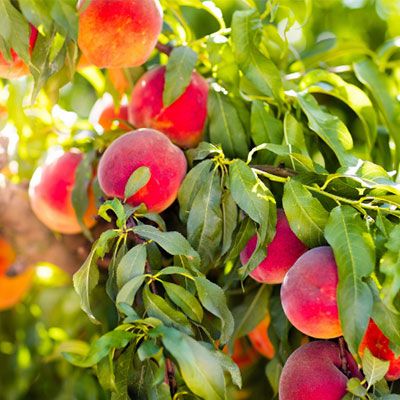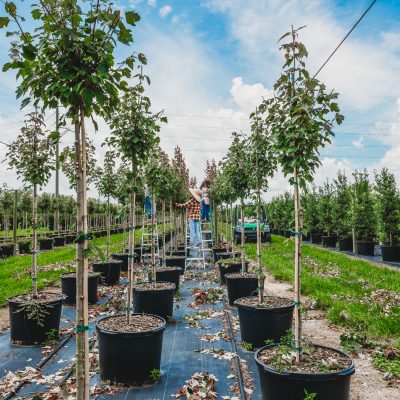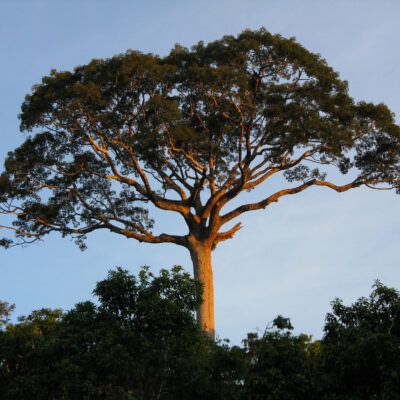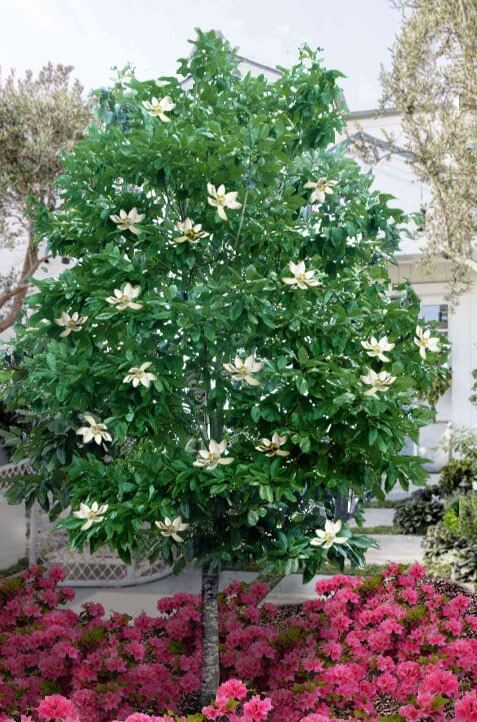Proper care and maintenance are necessary because most trees can have a life span of 150 to 300 years. They prove to be an excellent investment for many generations.
Some of the critical things that can help in the care and maintenance of trees are—
Checking the Trees for Abnormalities- Keeping a regular check on the trees can help in identifying any problem areas. It is advisable to inspect the tree quite often and look for any signs of damage and decay that can potentially harm it. Dieback of the crown, stunted growth, trunk decay, and deformed growth are the common signs that indicate that the tree is severely damaged. Pests and insects can be controlled by applying pesticides and other chemicals.
Pruning is crucial to maintaining the tree, so it continues to thrive. Pruning can be done to get the desired shape. However, during the initial growth years, some of the branches and leaves are pruned away so that the tree develops a healthy root system. Diseased, dead, or infested branches also should be pruned away so that the infection or disease does not spread to the entire tree. It is essential to learn from experience by monitoring the tree’s response to pruning. Heavy pruning is not recommended as it can damage the entire tree. You can seek help from professionals for getting the mature trees pruned as they are tricky.

Mulching- Mulching is very effective in maintaining the temperature of soil around the roots. Temperature changes do not stress out this way, the plants, and trees. Mulching also helps retain more moisture in the soil for extended periods. It is advisable to apply mulch around the tree, ensuring that the bark or trunk is not in direct contact with it. Moist mulch can damage the trunk if it is in direct contact for a prolonged period. Remove rotten mulch and replace it with a fresh layer to maintain healthy growing conditions for the tree.
These are some of the tips for the care and maintenance of different varieties of trees. You can try growing some fantastic trees in your garden to enjoy their numerous benefits.
Source to Buy a Variety of Trees
Tree Care and Maintenance: Cultivating the Green Guardians
Trees, the silent sentinels of our landscapes, offer many benefits to our environment, health, and wellbeing. Trees are essential to our ecosystem, from providing oxygen to sequestering carbon, offering shade on hot summer days, and enhancing property values. This comprehensive guide delves into tree care and maintenance, exploring the techniques, benefits, and significance of nurturing these green giants.
Understanding Tree Care and Maintenance
Trees are living organisms that play a crucial role in our environment and require proper care and attention to thrive. Tree care encompasses various practices that aim to promote trees' health, vitality, and aesthetics.
One of the crucial parts of tree care is regular watering, especially during the dry season, to ensure that the tree roots receive enough moisture to support their growth. Additionally, pruning is a vital practice that helps to remove diseases.
Fertilization is also critical for trees, providing the necessary nutrients for their growth and development. Properly fertilizing trees involves understanding the specific needs of different tree species, as some require more or less fertilization than others.
Pest and disease management is another essential aspect of tree care. Trees can suffer from many pests and diseases that harm their growth and health. Therefore, monitoring the tree's health regularly and taking appropriate measures to prevent or control any infestations is essential.
Overall, understanding the specific needs of different tree species is fundamental to providing adequate care. By implementing these practices, we can help ensure that our trees remain healthy, beautiful, and beneficial to our environment.
Benefits of Tree Care and Maintenance
Trees are one of nature's most valuable resources. Proper tree care is crucial for the trees' wellbeing and benefits the environment and people.
One of the most significant benefits of well-maintained trees is cleaner air. Trees do photosynthesis. This process helps reduce the impact of greenhouse gases on the environment. This process helps to reduce pollution levels and improve the overall air quality.
In addition to the benefits of air quality, trees provide a natural habitat for wildlife. They serve as homes and food sources for many animals, including birds, squirrels, and insects. Trees also help reduce soil erosion by holding the soil in place with their roots, which helps reduce the impact of stormwater runoff.
Another benefit of trees is their ability to mitigate the urban heat island effect. Urban areas can become much hotter during the summer than surrounding rural areas due to their heat-absorbing properties.
Besides these environmental advantages, trees can add significant value to properties and enhance community aesthetics. They act as natural landmarks, provide a sense of place, and offer a peaceful and calming environment. Trees also positively impact people's mental health, making them feel more connected to nature and contributing to their wellbeing.
In conclusion, proper tree care is essential, and its benefits are far-reaching. It is a simple yet effective way to improve the environment.
Watering For Tree Care and Maintenance
Trees are an essential part of our ecosystem, and their health and survival are critical for maintaining the balance of nature. Proper watering is a crucial factor in determining the health of trees. Adequate watering is essential in drought-prone areas or urban environments with limited access to groundwater.
Deep and infrequent watering techniques are highly recommended when it comes to watering trees. This means that the tree should be flooded with a significant amount of water at once so the water reaches the deep roots in the soil. Watering encourages the growth of roots, which helps the tree to become more drought-tolerant.
Mulching around the base of trees is another technique that can help retain moisture and regulate soil temperature, significantly reducing water stress on the tree. Mulch acts as a barrier, stopping the soil from drying out too quickly. Moreover, it helps regulate the soil temperature, preventing it from getting too hot or too cold, which can harm the tree's roots.
In summary, proper watering techniques, such as deep and infrequent watering and mulching around the base of trees, have a crucial role in maintaining the health and survival of trees. By implementing these techniques, we can help ensure our trees continue to thrive. Proper watering techniques involve deep, infrequent watering to encourage profound root growth and drought tolerance.
Pruning For Tree Care and Maintenance
Pruning is a critical component of tree care removal of branches to improve structure, safety, and aesthetics. Proper pruning techniques vary depending on the tree species, age, and desired outcome. Benefits of pruning include improved air circulation, reduced risk of disease and pest infestation, and enhanced overall tree health and appearance.
Fertilization:
Fertilization supplements the nutrient uptake of trees, particularly in urban environments where soil quality may be poor. Soil testing can help determine nutrient deficiencies, guiding the selection and application of appropriate fertilizers.
Pest and Disease Management For Tree Care and Maintenance
Integrated pest management (I.P.M.) strategies, prioritizing cultural, biological, and mechanical control methods over chemical pesticides, are recommended to minimize environmental impact and preserve beneficial organisms.
Monitoring Tree Health:
Regular tree health monitoring is essential for identifying potential issues before they escalate. Signs of stress or decline, such as wilting foliage, unusual discoloration, or dieback, should be promptly addressed. Consulting with certified arborists or tree care professionals can help diagnose problems and develop appropriate treatment plans.
Environmental Considerations:
When caring for trees, it's essential to consider their broader environmental impact. Selecting native tree species adapted to local climate and soil conditions can enhance resilience and biodiversity. Avoiding invasive species helps prevent ecological disruption and promotes the health of native ecosystems.

Safety Measures:
Safety should always be a priority when performing tree care and maintenance activities. Proper training, equipment, and techniques are essential to prevent accidents and injuries. Professional arborists with specialized equipment and expertise should be consulted for large or hazardous trees to ensure safe and effective maintenance practices.
Community Engagement For Tree Care and Maintenance
Involving the community in tree care fosters stewardship of green spaces. Tree planting initiatives, educational workshops, and volunteer opportunities allow residents to contribute to urban forestry efforts and build stronger, more resilient communities.

Conclusion:
In conclusion, tree care and maintenance are essential practices for preserving our urban forests' health, beauty, and ecological value. By understanding the needs of trees, implementing proper care techniques, and fostering community involvement, we can cultivate thriving urban landscapes that benefit both people and the planet. As stewards of our environment, we are responsible for nurturing and protecting these green guardians for generations to come.



















































